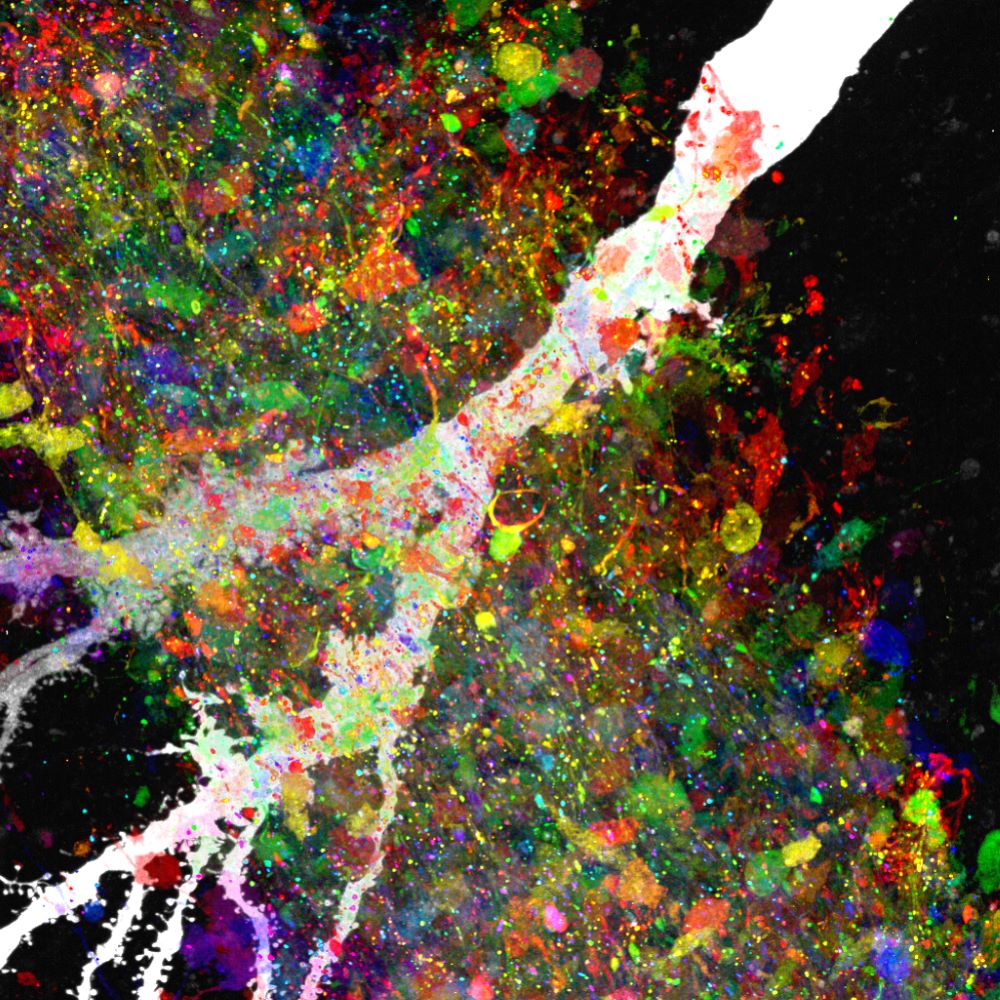June 22, 2023
A Scientific Case for Self-Identification
Biology attests to non-binary Sex and Gender despite persisting biases
When Institute of Science and Technology Austria (ISTA) Professor Nick Barton, a world-renowned expert in evolutionary genetics, is asked if nature is queer, he responds with: “Most definitely.”

“There’s a huge diversity of things that go on in nature,” Barton adds. “And actually, one of the big discoveries…possibly the biggest discovery in evolutionary biology in the last century—made in the 1960s—was that there is far more genetic variation than scientists had realized and that’s held up till now! There’s enormous variability both at the DNA sequence level and in almost in any trait, including sexual dimorphism and sexual preference.”
Barton’s view of diversity seen in nature falls neatly with the message of Pride Month that in humans, at least, sex, gender, and partnership exist on a continuum. In fact, sex and gender are separate entities that can have bridges and borders between them. Often, gender, being an identity-based socially derived construct, is clubbed wrongly with sex, which itself has multiple biological levels like anatomy, chromosomes, hormones, and physiology that may or may not correspond with each other. The use of sex and gender interchangeably has led to the wrong notion that biology alone determines gender and by extension gender roles in society.
For most of history, a significant portion of biological research has looked for sex differences. This has given credence to a binary paradigm of sex and gender. Essentially: Men are from Mars, women are from Venus. While it still causes queerphobic and sexist biases, this distinction is not supported by scientific evidence. However, the paradigm has also skewed the science itself by setting us up with erroneous standards for sex and gender. Barton brings up the dark history of eugenics as an example of how, in the past, the scientific community has been instrumental in encoding society’s prejudices by supporting them with outdated science. “Hopefully, we’re better now”, he says. “But I’m not sure; sometimes I wonder if we’re just dealing with different prejudices.”
The suspicion that research continues to indirectly support biases is shared by his student, Gemma Puixeu. On the verge of finishing her doctoral thesis on the evolution of sex jointly with ISTA’s Barton group and Vicoso group, Puixeu says that the scientific community has failed to address the question of how women and men are different from one another “not because we have not tried enough but precisely because we have tried too hard.” If we are to insist on studying sex and gender, Puixeu suggests, we should find a different methodology, one that acknowledges the strong influence of sociocultural norms in our expression of sex and gender and tries to disentangle it from biological facts.
Questioning binary sex and gender
Puixeu has contributed to the scientific discussion on the topic in the introduction of her own PhD thesis and also in a talk titled “Questioning the biological basis of sex and gender differences” she delivered at the Systematics, Biogeography, and Evolution meeting in 2021.
In the talk, she lay bare the simplistic logic behind the old paradigm of the biological basis of sex and gender. And then step by step erodes it. The old paradigm stands on three pillars. These are chromosomal sex, gonadal sex, and what Puixeu describes as “systemic sex” referring to those higher-order aspects of sex that involve general traits interconnected with one another, such as “brain sex”, physical appearance, voice tone, and feminine and masculine coded behavior. The seemingly binary nature of each of these three pillars is easily refuted by scientific observations. But first, Puixeu points out a critical error in the logic.
Each of these pillars is contrived linearly: sex chromosomes lead to corresponding gonads via genes, and gonadal sex leads to systemic sex via hormones. “The assumption is that genes and hormones linearly determine the development of the most complex elements of systemic sex, which includes brain structure, leading to completely differentiated male and female brains: his being larger and heavier, and hers being more interconnected between hemispheres. And these two different sets of brains would lead to two completely differentiated sets of attitudes, behaviors, preferences, and so on, which are ultimately supposed to confirm gender. And Voila! Gender would be binary by nature. And it would be a linear consequence of the binary sex chromosome. This is how we understood things for a very long time and still do today,” Puixeu says.
However, a new body of evidence has provided us with a revised picture that suggests the process of sex and gender expression is multifactorial, leading to a continuum of possibilities for sex and gender expression. For example, estimates suggest at least 40 variations of sex chromosomes in humans. From here on, the complexity only escalates, involving bi-directional cross-talk between gene expression patterns, hormone levels, hormone responsiveness, and physiology. When we ultimately arrive at gender expression, there are various non-biological elements such as culture, education, and societal context too that take part in the process. Citing new work, Puixeu says that “various non-biological factors have been shown to influence even biological variables such as hormones or brain structures. One example is the human brain mosaic model, which posits that each brain is a combination of what was considered male and female brain structures.

Self-Identification is key for an inclusive and unbiased science
“The reinforcement of sexual binaries not only denies the existence of particular individuals subject to this different reality, but also modifies the data that we use to understand and assesses sex and gender. We do this by forcing intersex people to modify their bodies and alter their hormonal levels in infancy, when they are unable to provide their consent, just because they don’t fit our current standards. We are in turn modifying the standards and, with them, our understanding of what we think to be the most basic biological dimension of sex,” Puixeu says. It is noteworthy that in some countries, including Austria, intersex normalization surgery has been declared unconstitutional recently.
Both Puixeu and Barton make sure to underline the fact that restoring sex, gender, as well as partnership on a continuum doesn’t erase the fact that biological sex is crucial to science. Studying sex differences is especially important in fields like biomedicine and conservation. “The problem arises when biased science is used to maintain an inequitable status quo,” Puixeu says. Barton offers that “the main thing science can or should do is give people an evolutionary perspective, to see just how weird and wonderful nature is; in a deep sense, evolution values diversity.”
“It is worth remembering,” he says, “that the whole reason that sexual reproduction exists is to promote diversity.”
Since sex and gender are complex and nuanced, deterministically deriving a person’s identity by examining their chromosomal composition, anatomy, physiology, and even psychosocial behaviors or attitudes is unlikely to give us a binary picture every time. While gender is best left to individual identities, sex might need to be redefined.
Sex and gender binary, like heteronormativity, are not inscribed by biology. Instead, biology grants us more diversity than we are currently prepared to acknowledge.
Further Reading
How sexually dimorphic are we? Review and synthesis
Here’s Why Human Sex Is Not Binary
Sexing The Body, Book by Ann-Fausto Sterling
The Gendered Brain, Book by Ginna Rippon
Delusion of Gender – Book by Cordelia Fine



